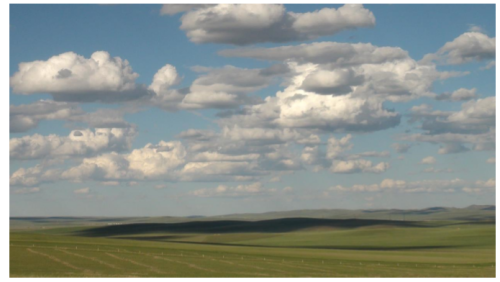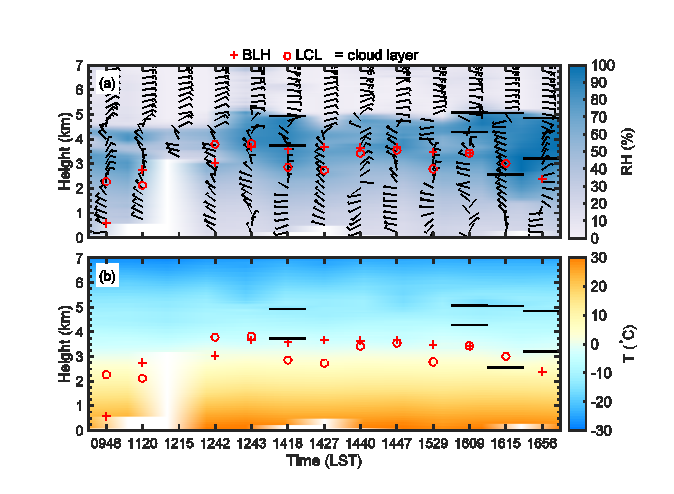IAP Scientists Conducted Intensive Sounding Measurements of Shallow Cumulus Clouds
Date:2017-03-20
Shallow cumulus (SCu) clouds play an important role in the global redistribution of water and energy and in the transport of surface heat, moisture and momentum to the free troposphere. SCu clouds or fair-weather cumuli are characterized by their small size, relatively weak convection, and no precipitation, which is significantly different from cumulus congestus and deep convection clouds.
SCu clusters can often be observed in summer over the Inner Mongolia Grassland (IMG), which is the largest grassland in China (Fig. 1); and yet, despite this, few studies on SCu in this region have been conducted.

Fig. 1. Shallow cumulus clouds on 11 August 2011 over the Inner Mongolia Grassland (Image by CHEN Hongbin).
Recently, a team led by Prof. CHEN Hongbin from the Institute of Atmospheric Physics, Chinese Academy of Sciences, provided an initial insight into the features of SCu over the IMG. An intensive radiosonde experiment was performed in the summer of 2014, and the findings recently accepted for publication by Advances in Atmospheric Sciences (Shi et al., 2017) constitute the first report of SCu observations over this region. The team’s investigations showed that the cloud base height was far in excess of that over ocean areas and the Southern Great Plains of the United States. Further analysis indicated that the formation and maintenance of SCu was in response to wind shear, subsidence, surface forcing and development of the boundary layer.
“We made some interesting discoveries regarding shallow cumulus over the IMG,” explains SHI Hongrong, the first author of the paper. “The cloud base height of 3.4 km and cloud top height of 5 km over this region were far in excess of those over the sea, but were relatively close to those of the Southern Great Plains in the United States.” (Fig. 2).

Fig. 2. Radiosonde data analysis from 1000 LST (local standard time) to 1700 LST 26 July 2014: temporal variation of relative humidity [filled in (a)], temperature [filled in (b)], wind shear, lifting condensation level (red circles) and boundary layer height (red crosses). Black lines show the base and top boundary of SCu cloud layers (Shi et al., 2017).
Professor CHEN, corresponding author, comments further that “…Although some interesting features associated with shallow cumulus have been revealed by the analysis of the intensive radiosonde measurements, we should keep it in mind that this is a preliminary study, since the results were mainly based on one case. Further studies of shallow cumulus in this specific key region are still required. A combination of radiosonde and satellite measurements, as well as model simulations, would shed new light on the formation and maintenance of these clouds”.
Reference
Shi, H. R., H. B. Chen, X. A. Xia, X. H. Fan, J. Q. Zhang, J. Li, and C. Ling, 2017: Intensive radiosonde measurements of summertime convection over the Inner Mongolia Grassland in 2014: Difference between shallow cumulus and other conditions. Adv. Atmos. Sci., 34(6), in press, doi: 10.1007/s00376-017-6284-2. (in press http://159.226.119.58/aas/EN/10.1007/s00376-017-6284-2)
Contact: Prof. CHEN Hongbin, chb@mail.iap.ac.cn
